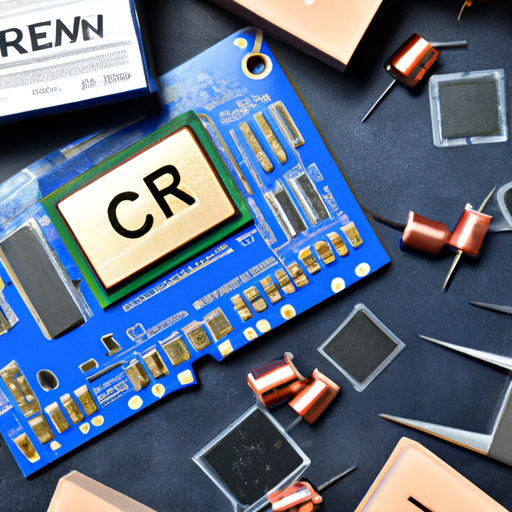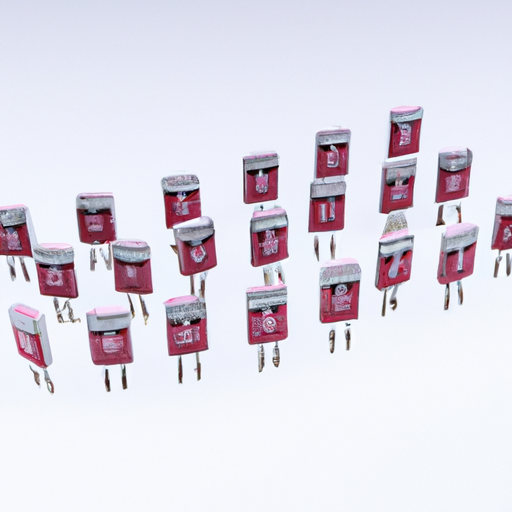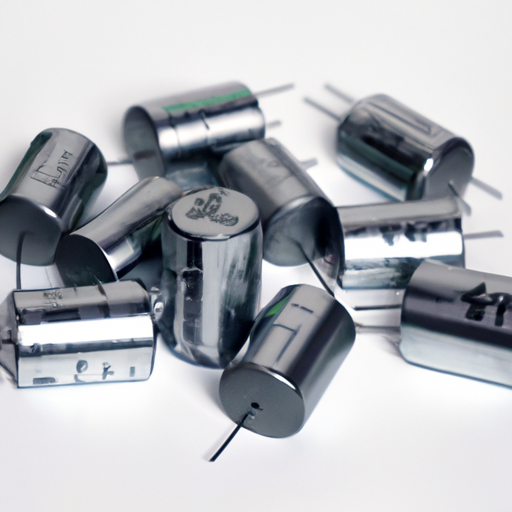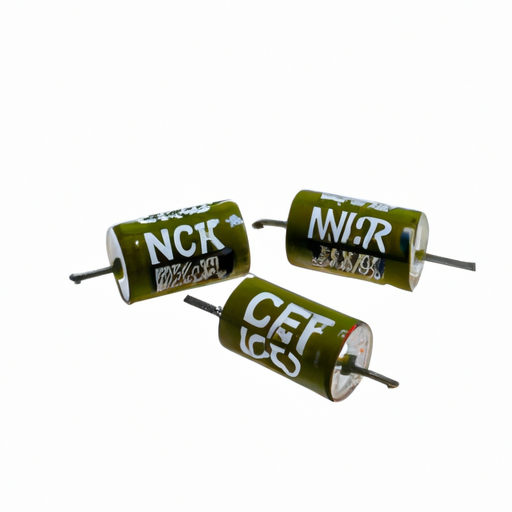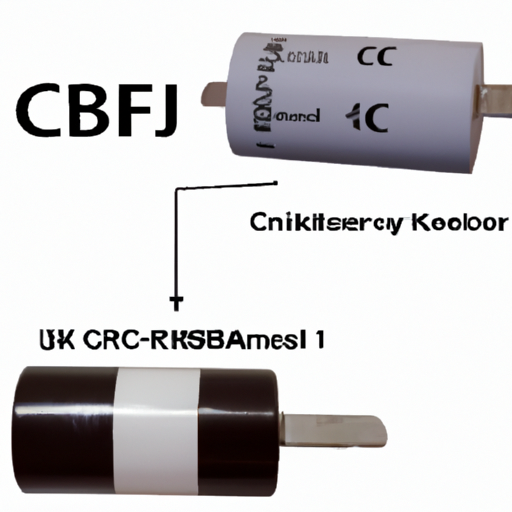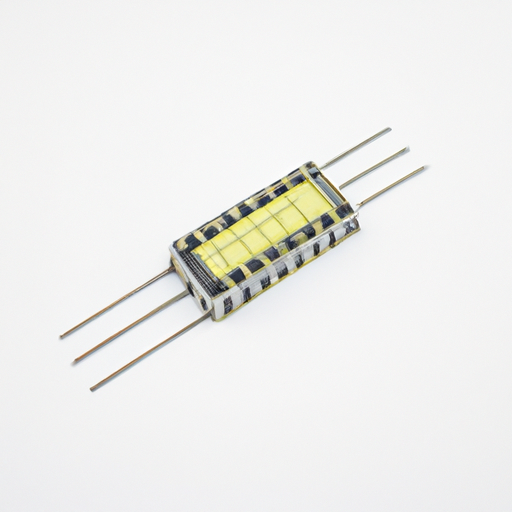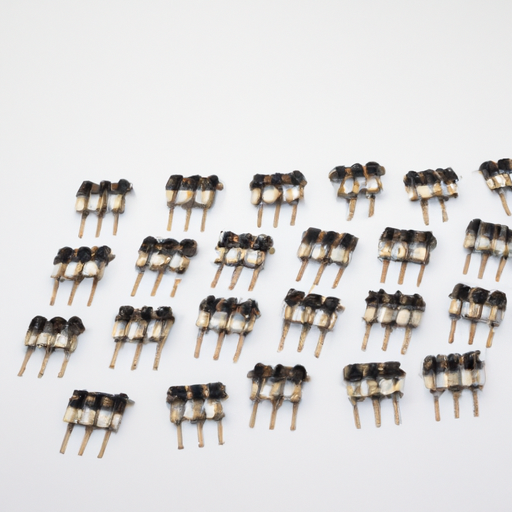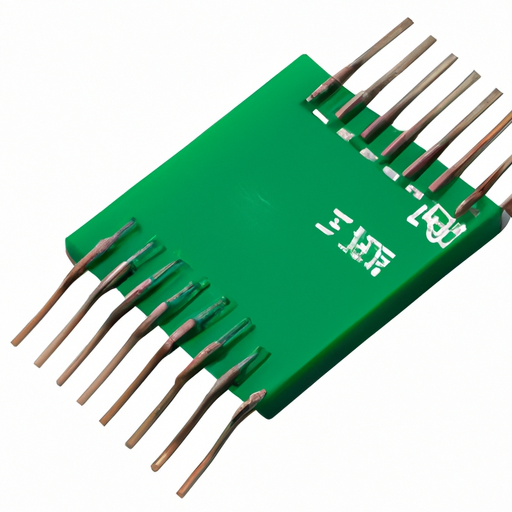
Core Functional Technology Articles on MM74HC373N Arrays and Signal Transformers 1. **Understanding the MM74HC373N: A High-Speed Octal Latch**
- **Overview**: The MM74HC373N is an octal transparent latch designed for high-speed applications, making it ideal for interfacing and data storage in digital circuits. It operates efficiently across a wide voltage range and is compatible with TTL logic levels, ensuring versatility in various electronic designs.
- **Key Features**:
- **Eight Data Inputs and Outputs**: Facilitates simultaneous data handling.
- **Transparent Mode**: When the latch enable (LE) is high, data is continuously passed from inputs to outputs, allowing for real-time data processing.
- **Low Power Consumption**: Designed for energy efficiency, making it suitable for battery-operated devices.
- **High-Speed Operation**: Capable of handling fast data rates, essential for modern digital applications.
- **Applications**: Commonly used in data storage solutions, temporary data holding, and as an interface between different logic families, particularly in microcontroller and FPGA designs. 2. **Signal Transformers: Principles and Applications**
- **Overview**: Signal transformers are critical components in electrical engineering, facilitating the transfer of electrical energy between circuits while providing isolation. They are essential for maintaining signal integrity and ensuring safe operation in various applications.
- **Key Features**:
- **Isolation**: Provides electrical separation between circuits, enhancing safety and reducing interference.
- **Impedance Matching**: Optimizes power transfer and minimizes signal reflection, crucial for high-frequency applications.
- **Signal Integrity**: Maintains the quality of the signal over long distances, essential in communication and audio systems.
- **Applications**: Widely used in audio systems, telecommunications, data transmission, and power supply applications, where signal fidelity and safety are paramount. Application Development Cases 1. **Data Acquisition Systems Using MM74HC373N**
- **Case Study**: A data acquisition system was developed for environmental monitoring, utilizing the MM74HC373N to latch data from multiple sensors.
- **Implementation**:
- Sensors output data to the MM74HC373N, which latches the data when the latch enable (LE) signal is activated.
- The latched data is then processed by a microcontroller for further analysis, allowing for real-time monitoring and data logging.
- **Outcome**: The system achieved improved data integrity and reduced latency in data processing, enabling timely responses to environmental changes. 2. **Audio Signal Processing with Signal Transformers**
- **Case Study**: An audio processing system was designed to enhance sound quality in a home theater setup using signal transformers.
- **Implementation**:
- Signal transformers were employed to isolate audio signals between different components (e.g., amplifiers, speakers), preventing ground loops and minimizing noise.
- The transformers ensured that the audio signals maintained their integrity, providing a clearer sound experience.
- **Outcome**: The system delivered enhanced audio clarity and fidelity, significantly improving the overall user experience in home entertainment. 3. **Communication Systems Utilizing MM74HC373N and Signal Transformers**
- **Case Study**: A communication system was developed for a remote sensing application, integrating both MM74HC373N and signal transformers to ensure reliable data transmission.
- **Implementation**:
- The MM74HC373N was used to latch data from remote sensors, which were then transmitted over long distances using signal transformers to maintain signal integrity.
- The transformers provided necessary isolation and impedance matching for the transmission lines, ensuring minimal signal degradation.
- **Outcome**: The system achieved reliable data transmission over long distances, with enhanced signal quality and reduced interference, making it suitable for critical monitoring applications. Conclusion
The MM74HC373N and signal transformers are integral components in modern electronic applications. Their capabilities in data latching and signal integrity maintenance are invaluable across various fields, including data acquisition, audio processing, and communication systems. By understanding their core functionalities and exploring practical applications, engineers can develop innovative solutions that enhance performance and reliability in electronic design and development.

Application Development in Tantalum-Polymer Capacitors: CFR-50JB-52-1M2Tantalum-polymer capacitors, such as the CFR-50JB-52-1M2, are gaining traction in various sectors due to their exceptional characteristics, including high capacitance, low equivalent series resistance (ESR), and robust thermal stability. Below, we delve into the key technologies that underpin these capacitors and highlight notable success stories that illustrate their application across different industries.
Key Technologies1. Hybrid Technology 2. High Temperature and Voltage Ratings 3. Miniaturization 4. Enhanced Reliability 5. Environmental Considerations 1. Consumer Electronics 2. Automotive Applications 3. Telecommunications 4. Medical Devices 5. Aerospace and Defense Success Stories ConclusionThe development and application of tantalum-polymer capacitors like the CFR-50JB-52-1M2 exemplify the advancements in capacitor technology that cater to the evolving demands of modern electronics. Their unique properties, coupled with enhanced reliability, have led to successful implementations across diverse industries, making them a preferred choice for engineers and designers seeking high-performance capacitors. As technology continues to advance, the role of tantalum-polymer capacitors is expected to expand further, driving innovation in electronic design and application.
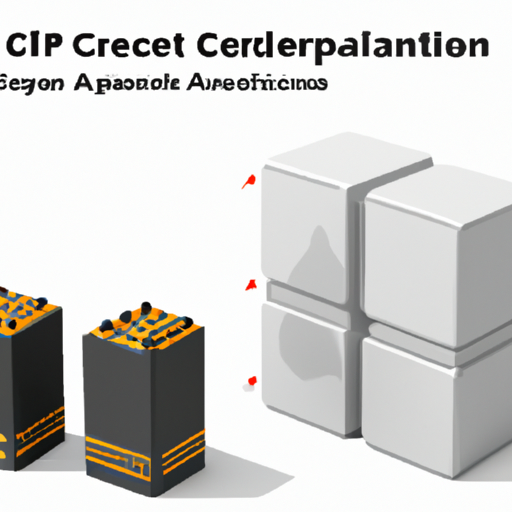
Application Development in Silicon Capacitors: Key Technologies and Success StoriesSilicon capacitors play a crucial role in modern electronics, particularly in applications that require high performance, miniaturization, and reliability. While the CFR-25JB-52-1K2 is a resistor, understanding the advancements in silicon capacitors can provide insights into their integration into various electronic systems. Below, we explore key technologies and notable success stories in the development of silicon capacitors.
Key Technologies in Silicon Capacitors1. Silicon-on-Insulator (SOI) Technology2. MEMS Capacitors3. High-k Dielectrics4. 3D Integration5. Flexible and Printed Electronics1. Consumer Electronics2. Automotive Applications3. Telecommunications4. Medical Devices5. Energy Harvesting Success Stories in Application Development ConclusionThe advancements in silicon capacitors have significantly impacted various industries, driving innovation and enhancing the performance of electronic devices. Their integration into consumer electronics, automotive systems, telecommunications, medical devices, and energy harvesting applications highlights their versatility and importance in modern electronic design. As technology continues to evolve, the role of silicon capacitors is expected to expand, paving the way for new innovations and applications that will shape the future of electronics.
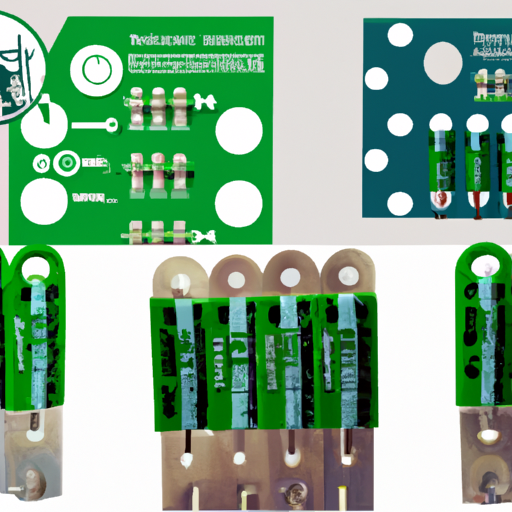
Core Functional Technology Articles on Trimmers and Variable Capacitors 1. **Understanding Trimmers and Their Applications**
- **Overview**: Trimmers are adjustable resistors that allow for fine-tuning of circuit parameters. They are crucial in applications requiring precise calibration and adjustment.
- **Key Features**:
- **Compact Size**: Designed to fit into small spaces within electronic devices.
- **Low Power Consumption**: Ideal for battery-operated devices.
- **Adjustable Resistance**: Enables precise control over circuit behavior.
- **Applications**:
- **RF Circuit Tuning**: Essential for adjusting frequencies in communication devices.
- **Audio Equipment Gain Adjustment**: Used to balance audio levels in amplifiers.
- **Sensor Calibration**: Fine-tunes output signals for accurate measurements. 2. **Variable Capacitors: Principles and Uses**
- **Overview**: Variable capacitors are components that allow for the adjustment of capacitance, which is vital for tuning and filtering in electronic circuits.
- **Key Features**:
- **Adjustable Capacitance**: Achieved by altering the plate area or distance between plates.
- **Types**: Available in air, ceramic, and electrolytic configurations, each suited for different applications.
- **Applications**:
- **Radio Tuning**: Used in transmitters and receivers to select desired frequencies.
- **Oscillator and Filter Circuits**: Integral in generating and shaping signals.
- **Timing Circuits**: Essential for phase-locked loops (PLLs) and other timing applications. Application Development Cases 1. **Tuning Circuits in RF Applications**
- **Case Study**: Development of an RF transmitter circuit utilizing trimmers for frequency adjustment.
- **Implementation**: Engineers incorporated a trimmer capacitor to fine-tune the resonant frequency of an LC circuit, optimizing transmission and minimizing interference.
- **Outcome**: Enhanced signal clarity and range, underscoring the importance of precise tuning in RF applications. 2. **Audio Equipment Calibration**
- **Case Study**: Design of an audio amplifier featuring trimmers for gain adjustment.
- **Implementation**: Trimmer potentiometers were employed to calibrate the gain across different channels, ensuring balanced audio output.
- **Outcome**: Improved audio quality and user satisfaction, highlighting the critical role of trimmers in high-fidelity audio systems. 3. **Variable Capacitors in Oscillator Circuits**
- **Case Study**: Creation of a variable frequency oscillator (VFO) for a synthesizer.
- **Implementation**: A variable capacitor was integrated into the oscillator circuit, allowing musicians to adjust the pitch of the sound produced.
- **Outcome**: Increased versatility in sound design, demonstrating the utility of variable capacitors in musical applications. 4. **Sensor Calibration in Measurement Devices**
- **Case Study**: Calibration of a temperature sensor using trimmers.
- **Implementation**: A trimmer resistor was utilized to adjust the output signal of the temperature sensor to align with a known reference.
- **Outcome**: Achieved high accuracy in temperature readings, illustrating the essential role of trimmers in sensor applications. ConclusionTrimmers and variable capacitors are vital components in contemporary electronic design, facilitating precise adjustments and calibrations across a wide range of applications. Their ability to fine-tune circuits significantly enhances performance in RF communications, audio systems, and measurement devices. A thorough understanding of their core functionalities and practical applications can lead to more effective designs and innovations in electronic engineering. As technology continues to evolve, the importance of these components in achieving optimal performance in electronic devices will only grow.

Application Development in Mica and PTFE Capacitors for CFR-25JB-52-1R1: Key Technologies and Success StoriesMica and PTFE (Polytetrafluoroethylene) capacitors are essential components in high-performance electronic applications, including RF circuits, high-voltage power supplies, and precision timing circuits. The CFR-25JB-52-1R1 is a specific part number that represents a type of capacitor, and understanding its application development involves exploring the key technologies and success stories associated with mica and PTFE capacitors.
Key Technologies1. Material Properties2. Manufacturing Techniques3. Dielectric Properties4. High-Frequency Performance5. Temperature Stability1. Telecommunications2. Aerospace and Defense3. Medical Devices4. Industrial Automation5. Consumer Electronics Success Stories ConclusionThe application development of mica and PTFE capacitors, such as the CFR-25JB-52-1R1, highlights the significance of material properties, manufacturing techniques, and performance characteristics across various industries. Their success stories underscore their critical role in telecommunications, aerospace, medical devices, industrial automation, and consumer electronics, demonstrating their versatility and reliability in high-performance applications. As technology continues to advance, the demand for these specialized capacitors is likely to grow, paving the way for further innovations and applications in the field of electronics.
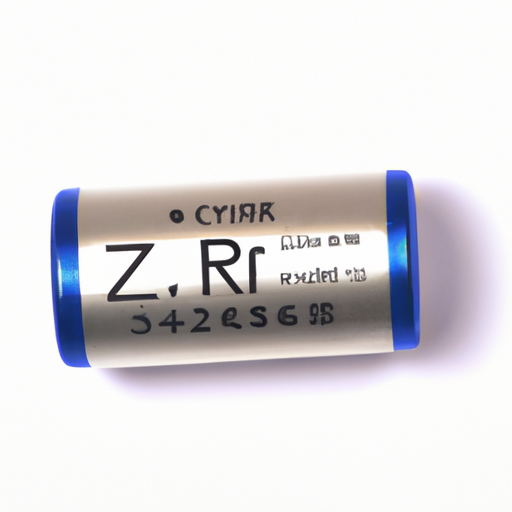
Core Functional Technologies of Film Capacitors1. Dielectric Material: Film capacitors utilize thin plastic films as the dielectric material, which can be made from various polymers such as polyester (PET), polypropylene (PP), and polycarbonate (PC). The choice of dielectric affects the capacitor's performance, including capacitance stability, temperature coefficient, and voltage rating.
2. Low ESR and ESL: Film capacitors typically exhibit low equivalent series resistance (ESR) and equivalent series inductance (ESL), making them suitable for high-frequency applications. This characteristic allows for efficient energy storage and discharge, minimizing power losses. 3. High Voltage Ratings: Film capacitors can handle high voltage applications, making them ideal for power electronics, motor drives, and renewable energy systems. Their ability to maintain performance under high voltage conditions is a significant advantage.
4. Temperature Stability: Many film capacitors offer excellent temperature stability, which is crucial for applications that experience varying thermal conditions. This stability ensures consistent performance over a wide temperature range.
5. Long Lifespan: Film capacitors are known for their durability and long operational life, often exceeding 100,000 hours. This longevity reduces the need for frequent replacements, making them cost-effective in the long run.
6. Self-Healing Properties: Film capacitors possess self-healing capabilities, meaning that if a dielectric breakdown occurs, the capacitor can recover without permanent damage. This feature enhances reliability and safety in applications.
Application Development Cases1. Power Electronics: In power supply circuits, film capacitors are used for filtering, energy storage, and snubber circuits. Their low ESR and ESL characteristics help improve the efficiency of power converters and inverters, which are essential in renewable energy systems like solar inverters and wind turbines.
2. Audio Equipment: High-fidelity audio applications benefit from film capacitors due to their low distortion and high-frequency response. They are commonly used in crossover networks, amplifiers, and signal processing circuits to ensure high-quality sound reproduction.
3. Motor Drives: In variable frequency drives (VFDs) and servo motors, film capacitors are employed for DC link applications. Their ability to handle high ripple currents and voltages makes them suitable for smoothing out voltage fluctuations and improving overall system performance.
4. Telecommunications: Film capacitors are used in RF applications, including filters and matching networks, due to their stability and low losses at high frequencies. They help maintain signal integrity in communication systems.
5. Consumer Electronics: In devices such as televisions, computers, and smartphones, film capacitors are used for decoupling and bypassing applications. Their compact size and reliability make them ideal for space-constrained environments.
6. Lighting Applications: In LED drivers and lighting control systems, film capacitors are used for power factor correction and energy storage. Their high voltage ratings and efficiency contribute to the overall performance of lighting solutions.
ConclusionFilm capacitors, including models like the CFR-25JB-52-1M1, are integral components in modern electronic systems. Their unique properties, such as low ESR, high voltage ratings, and self-healing capabilities, make them suitable for a wide range of applications, from power electronics to consumer devices. As technology continues to evolve, the demand for reliable and efficient capacitors will only increase, further solidifying the role of film capacitors in the electronics industry.
Future TrendsAs the electronics industry moves towards miniaturization and higher efficiency, film capacitors are expected to evolve with advancements in materials science and manufacturing techniques. Innovations such as nanotechnology and advanced polymer formulations may lead to even better performance characteristics, enabling film capacitors to meet the demands of next-generation applications in electric vehicles, smart grids, and IoT devices. The ongoing research and development in this field will likely enhance the capabilities of film capacitors, ensuring their relevance in future electronic designs.
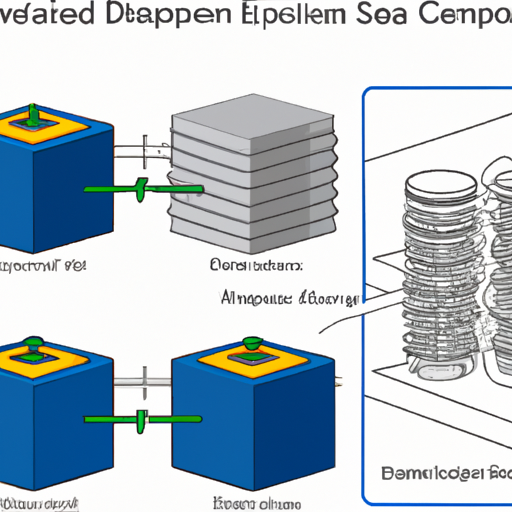
Application Development in Electric Double Layer Capacitors (EDLC) and Supercapacitors: CFR-50JB-52-1M1Electric Double Layer Capacitors (EDLCs), commonly referred to as supercapacitors, are pivotal in modern energy storage solutions due to their unique characteristics that bridge the gap between traditional capacitors and batteries. The CFR-50JB-52-1M1 model exemplifies the advancements in this field, showcasing the potential of supercapacitors in various applications. Below is a detailed exploration of key technologies and success stories associated with EDLCs and supercapacitors.
Key Technologies in EDLCs and Supercapacitors1. Electrode Materials2. Electrolytes3. Device Architecture4. Manufacturing Techniques5. Energy Management Systems1. Electric Vehicles (EVs)2. Renewable Energy Systems3. Consumer Electronics4. Industrial Applications5. Public Transportation6. Smart Grids Success Stories in Application Development ConclusionThe development of Electric Double Layer Capacitors and supercapacitors, such as the CFR-50JB-52-1M1, is propelled by advancements in materials science, manufacturing techniques, and integration with modern energy systems. Their applications span various industries, from automotive to renewable energy, underscoring their versatility and significance in the transition to sustainable energy solutions. As technology continues to evolve, the role of supercapacitors in energy storage and management is poised to expand, offering innovative solutions to meet the growing energy demands of the future.

Application Development in Tantalum Capacitors for CFR-50JB-52-1K1: Key Technologies and Success StoriesTantalum capacitors, such as the CFR-50JB-52-1K1, are integral components in modern electronics, known for their high capacitance, stability, and reliability. Below, we explore the key technologies that enhance their performance and some notable success stories that highlight their application across various industries.
Key Technologies1. High Capacitance Density 2. Temperature Stability 3. Low ESR (Equivalent Series Resistance) 4. Long Lifespan 5. Advanced Manufacturing Techniques 6. Surface Mount Technology (SMT) 1. Consumer Electronics 2. Automotive Applications 3. Medical Devices 4. Aerospace and Defense 5. Telecommunications Success Stories ConclusionThe application development of tantalum capacitors like the CFR-50JB-52-1K1 has been propelled by technological advancements and the increasing demand for reliable, high-performance components across various industries. Their unique properties make them indispensable in modern electronics, and ongoing innovations are expected to further expand their applications in the future. As industries continue to evolve, tantalum capacitors will remain at the forefront of electronic component technology, driving progress in consumer electronics, automotive, medical, aerospace, and telecommunications sectors.
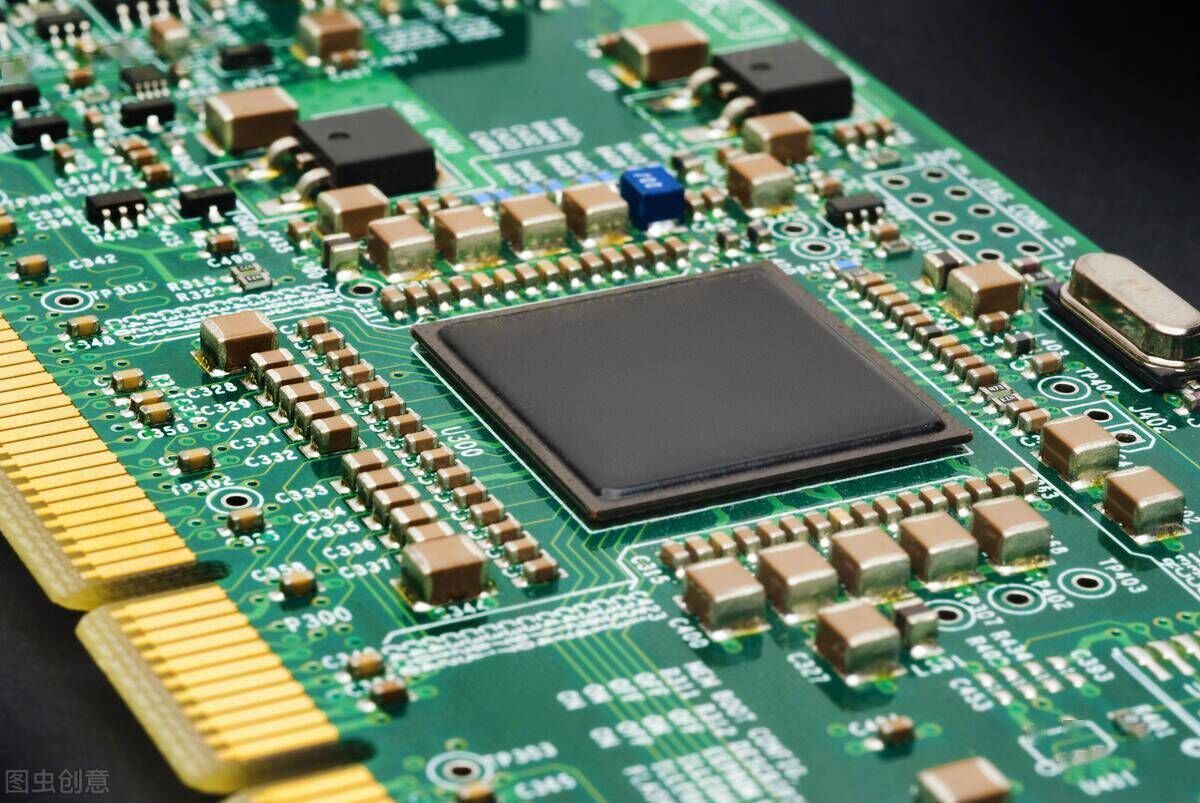
What Kind of Product is the Array? I. IntroductionIn the realm of computing and data management, arrays play a pivotal role. But what exactly is an array? At its core, an array is a data structure that allows for the storage of multiple values in a single variable. This simple yet powerful concept is fundamental to programming and data manipulation, making arrays an essential product in the toolkit of developers and data scientists alike. In this article, we will explore the nature of arrays, their characteristics, types, applications, advantages, and limitations, providing a comprehensive understanding of this crucial data structure. II. Understanding Arrays A. Basic DefinitionAn array is a collection of elements, each identified by at least one array index or key. In programming, arrays are used to store data in a structured format, allowing for efficient access and manipulation. There are two primary types of arrays: one-dimensional and multi-dimensional. One-dimensional arrays can be thought of as a list of items, while multi-dimensional arrays, such as matrices, allow for more complex data organization. B. Historical ContextThe concept of arrays has evolved significantly since the early days of computer science. Initially, arrays were simple data structures used for basic data storage. Over the years, as programming languages and computing power advanced, arrays became more sophisticated, leading to the development of dynamic and associative arrays. Key milestones in this evolution include the introduction of high-level programming languages that abstracted the complexity of memory management, making arrays more accessible to developers. III. Characteristics of Arrays A. Structure and SyntaxArrays are structured differently across various programming languages. For instance, in Python, an array can be created using lists, while in Java, arrays are defined with specific data types. Here are some syntax examples:Python: `my_array = [1, 2, 3, 4]`Java: `int[] myArray = {1, 2, 3, 4};`C++: `int myArray[] = {1, 2, 3, 4};` B. Memory AllocationOne of the defining characteristics of arrays is their contiguous memory allocation. This means that all elements of an array are stored in adjacent memory locations, which allows for efficient data access. However, this also has implications for performance and efficiency, particularly when dealing with large datasets. C. Data TypesArrays can store different types of data, but they are typically homogeneous, meaning all elements are of the same data type. However, some programming languages, like Python, allow for heterogeneous arrays, where elements can be of different types. Examples of data types used in arrays include integers, floats, strings, and objects. IV. Types of Arrays A. One-Dimensional ArraysOne-dimensional arrays are the simplest form of arrays, consisting of a single row of elements. They are commonly used for storing lists of items, such as a list of student names or scores. In real-world applications, one-dimensional arrays can be found in scenarios like managing inventory or processing user input. B. Multi-Dimensional ArraysMulti-dimensional arrays extend the concept of one-dimensional arrays by adding additional dimensions. A two-dimensional array, for example, can be visualized as a table with rows and columns. These arrays are particularly useful in complex data structures, such as matrices used in mathematical computations or image processing. C. Dynamic ArraysDynamic arrays are a more flexible type of array that can change in size during runtime. Unlike static arrays, which have a fixed size, dynamic arrays can grow or shrink as needed, making them ideal for applications where the amount of data is not known in advance. This flexibility comes at the cost of additional memory management overhead. D. Associative ArraysAssociative arrays, also known as maps or dictionaries, allow for the storage of key-value pairs. Unlike traditional arrays, which use numerical indices, associative arrays use unique keys to access values. This makes them particularly useful for scenarios where data needs to be retrieved based on specific identifiers, such as user IDs or product codes. V. Applications of Arrays A. In ProgrammingArrays are fundamental in programming for data storage and management. They are used in various algorithms and data structures, such as sorting and searching algorithms, where quick access to elements is crucial. Arrays also serve as the backbone for more complex data structures like stacks, queues, and heaps. B. In Data ScienceIn the field of data science, arrays play a critical role in data analysis. Libraries and frameworks like NumPy and Pandas utilize arrays to handle large datasets efficiently. NumPy, for instance, provides support for multi-dimensional arrays and a wide range of mathematical functions, making it a staple in scientific computing. C. In Machine LearningArrays are indispensable in machine learning, particularly in model training and data preparation. They are used to represent datasets, features, and labels. In neural networks, arrays are employed to store weights and biases, facilitating the training process. The ability to manipulate arrays efficiently is crucial for building and optimizing machine learning models. VI. Advantages of Using Arrays A. Efficiency in Data AccessOne of the primary advantages of arrays is their efficiency in data access. Since elements are stored in contiguous memory locations, accessing an element by its index is a constant-time operation, making arrays ideal for scenarios where quick data retrieval is essential. B. Simplified Data ManagementArrays simplify data management by allowing developers to group related data together. This organization makes it easier to perform operations on multiple elements simultaneously, such as iterating through a list or applying a function to each element. C. Enhanced Performance in AlgorithmsArrays enhance the performance of algorithms by providing a structured way to store and access data. Many algorithms, such as sorting and searching, are optimized for use with arrays, leading to faster execution times and improved overall performance. D. Flexibility in Data HandlingWith the advent of dynamic and associative arrays, developers have greater flexibility in handling data. Dynamic arrays can adapt to changing data sizes, while associative arrays allow for more intuitive data retrieval based on keys rather than indices. VII. Limitations of Arrays A. Fixed Size in Static ArraysOne of the main limitations of static arrays is their fixed size. Once an array is created, its size cannot be changed, which can lead to wasted memory if the array is not fully utilized or insufficient space if the array needs to grow. B. Complexity in Multi-Dimensional ArraysWhile multi-dimensional arrays offer powerful data organization capabilities, they can also introduce complexity. Managing and accessing elements in multi-dimensional arrays can be more challenging than in one-dimensional arrays, particularly for those new to programming. C. Memory Management ChallengesArrays require careful memory management, especially in languages that do not have automatic garbage collection. Developers must ensure that memory is allocated and deallocated properly to avoid memory leaks and other issues. D. Performance Issues with Large Data SetsAs the size of an array increases, performance can become an issue. Operations on large arrays may lead to increased processing time and memory consumption, necessitating the use of more advanced data structures in some cases. VIII. ConclusionIn conclusion, arrays are a fundamental product in computing that serve as the backbone for data storage and manipulation. Their efficiency, simplicity, and versatility make them indispensable in programming, data science, and machine learning. As technology continues to evolve, the role of arrays will likely expand, with new developments in array structures and applications on the horizon. Understanding arrays and their characteristics is crucial for anyone looking to navigate the world of programming and data management effectively. IX. References- Knuth, D. E. (1997). *The Art of Computer Programming*. Addison-Wesley.- Cormen, T. H., Leiserson, C. E., Rivest, R. L., & Stein, C. (2009). *Introduction to Algorithms*. MIT Press.- McKinney, W. (2010). *Data Analysis with Python*. O'Reilly Media.- NumPy Documentation. (n.d.). Retrieved from [NumPy.org](https://numpy.org/)- Pandas Documentation. (n.d.). Retrieved from [Pandas.pydata.org](https://pandas.pydata.org/) This blog post provides a comprehensive overview of arrays, highlighting their significance in computing and data management. By understanding the various aspects of arrays, readers can appreciate their role in technology and their applications across different fields. What Kind of Product is the Array? I. IntroductionIn the realm of computing and data management, arrays play a pivotal role. But what exactly is an array? At its core, an array is a data structure that allows for the storage of multiple values in a single variable. This simple yet powerful concept is fundamental to programming and data manipulation, making arrays an essential product in the toolkit of developers and data scientists alike. In this article, we will explore the nature of arrays, their characteristics, types, applications, advantages, and limitations, providing a comprehensive understanding of this crucial data structure. II. Understanding Arrays A. Basic DefinitionAn array is a collection of elements, each identified by at least one array index or key. In programming, arrays are used to store data in a structured format, allowing for efficient access and manipulation. There are two primary types of arrays: one-dimensional and multi-dimensional. One-dimensional arrays can be thought of as a list of items, while multi-dimensional arrays, such as matrices, allow for more complex data organization. B. Historical ContextThe concept of arrays has evolved significantly since the early days of computer science. Initially, arrays were simple data structures used for basic data storage. Over the years, as programming languages and computing power advanced, arrays became more sophisticated, leading to the development of dynamic and associative arrays. Key milestones in this evolution include the introduction of high-level programming languages that abstracted the complexity of memory management, making arrays more accessible to developers. III. Characteristics of Arrays A. Structure and SyntaxArrays are structured differently across various programming languages. For instance, in Python, an array can be created using lists, while in Java, arrays are defined with specific data types. Here are some syntax examples:Python: `my_array = [1, 2, 3, 4]`Java: `int[] myArray = {1, 2, 3, 4};`C++: `int myArray[] = {1, 2, 3, 4};` B. Memory AllocationOne of the defining characteristics of arrays is their contiguous memory allocation. This means that all elements of an array are stored in adjacent memory locations, which allows for efficient data access. However, this also has implications for performance and efficiency, particularly when dealing with large datasets. C. Data TypesArrays can store different types of data, but they are typically homogeneous, meaning all elements are of the same data type. However, some programming languages, like Python, allow for heterogeneous arrays, where elements can be of different types. Examples of data types used in arrays include integers, floats, strings, and objects. IV. Types of Arrays A. One-Dimensional ArraysOne-dimensional arrays are the simplest form of arrays, consisting of a single row of elements. They are commonly used for storing lists of items, such as a list of student names or scores. In real-world applications, one-dimensional arrays can be found in scenarios like managing inventory or processing user input. B. Multi-Dimensional ArraysMulti-dimensional arrays extend the concept of one-dimensional arrays by adding additional dimensions. A two-dimensional array, for example, can be visualized as a table with rows and columns. These arrays are particularly useful in complex data structures, such as matrices used in mathematical computations or image processing. C. Dynamic ArraysDynamic arrays are a more flexible type of array that can change in size during runtime. Unlike static arrays, which have a fixed size, dynamic arrays can grow or shrink as needed, making them ideal for applications where the amount of data is not known in advance. This flexibility comes at the cost of additional memory management overhead. D. Associative ArraysAssociative arrays, also known as maps or dictionaries, allow for the storage of key-value pairs. Unlike traditional arrays, which use numerical indices, associative arrays use unique keys to access values. This makes them particularly useful for scenarios where data needs to be retrieved based on specific identifiers, such as user IDs or product codes. V. Applications of Arrays A. In ProgrammingArrays are fundamental in programming for data storage and management. They are used in various algorithms and data structures, such as sorting and searching algorithms, where quick access to elements is crucial. Arrays also serve as the backbone for more complex data structures like stacks, queues, and heaps. B. In Data ScienceIn the field of data science, arrays play a critical role in data analysis. Libraries and frameworks like NumPy and Pandas utilize arrays to handle large datasets efficiently. NumPy, for instance, provides support for multi-dimensional arrays and a wide range of mathematical functions, making it a staple in scientific computing. C. In Machine LearningArrays are indispensable in machine learning, particularly in model training and data preparation. They are used to represent datasets, features, and labels. In neural networks, arrays are employed to store weights and biases, facilitating the training process. The ability to manipulate arrays efficiently is crucial for building and optimizing machine learning models. VI. Advantages of Using Arrays A. Efficiency in Data AccessOne of the primary advantages of arrays is their efficiency in data access. Since elements are stored in contiguous memory locations, accessing an element by its index is a constant-time operation, making arrays ideal for scenarios where quick data retrieval is essential. B. Simplified Data ManagementArrays simplify data management by allowing developers to group related data together. This organization makes it easier to perform operations on multiple elements simultaneously, such as iterating through a list or applying a function to each element. C. Enhanced Performance in AlgorithmsArrays enhance the performance of algorithms by providing a structured way to store and access data. Many algorithms, such as sorting and searching, are optimized for use with arrays, leading to faster execution times and improved overall performance. D. Flexibility in Data HandlingWith the advent of dynamic and associative arrays, developers have greater flexibility in handling data. Dynamic arrays can adapt to changing data sizes, while associative arrays allow for more intuitive data retrieval based on keys rather than indices. VII. Limitations of Arrays A. Fixed Size in Static ArraysOne of the main limitations of static arrays is their fixed size. Once an array is created, its size cannot be changed, which can lead to wasted memory if the array is not fully utilized or insufficient space if the array needs to grow. B. Complexity in Multi-Dimensional ArraysWhile multi-dimensional arrays offer powerful data organization capabilities, they can also introduce complexity. Managing and accessing elements in multi-dimensional arrays can be more challenging than in one-dimensional arrays, particularly for those new to programming. C. Memory Management ChallengesArrays require careful memory management, especially in languages that do not have automatic garbage collection. Developers must ensure that memory is allocated and deallocated properly to avoid memory leaks and other issues. D. Performance Issues with Large Data SetsAs the size of an array increases, performance can become an issue. Operations on large arrays may lead to increased processing time and memory consumption, necessitating the use of more advanced data structures in some cases. VIII. ConclusionIn conclusion, arrays are a fundamental product in computing that serve as the backbone for data storage and manipulation. Their efficiency, simplicity, and versatility make them indispensable in programming, data science, and machine learning. As technology continues to evolve, the role of arrays will likely expand, with new developments in array structures and applications on the horizon. Understanding arrays and their characteristics is crucial for anyone looking to navigate the world of programming and data management effectively. IX. References- Knuth, D. E. (1997). *The Art of Computer Programming*. Addison-Wesley.- Cormen, T. H., Leiserson, C. E., Rivest, R. L., & Stein, C. (2009). *Introduction to Algorithms*. MIT Press.- McKinney, W. (2010). *Data Analysis with Python*. O'Reilly Media.- NumPy Documentation. (n.d.). Retrieved from [NumPy.org](https://numpy.org/)- Pandas Documentation. (n.d.). Retrieved from [Pandas.pydata.org](https://pandas.pydata.org/) This blog post provides a comprehensive overview of arrays, highlighting their significance in computing and data management. By understanding the various aspects of arrays, readers can appreciate their role in technology and their applications across different fields.
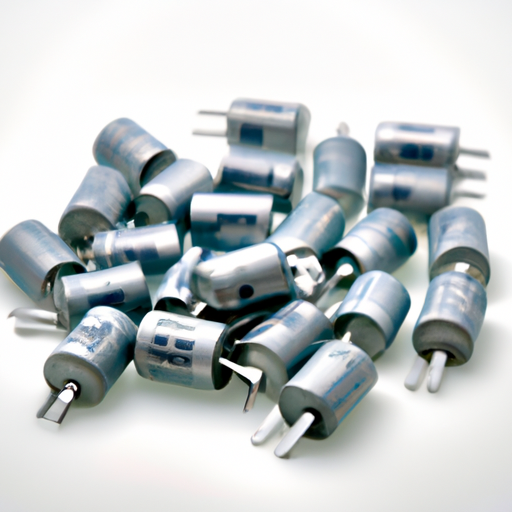
Core Functional Technologies of Aluminum Electrolytic Capacitors1. Capacitance and Voltage Ratings2. Polarization3. High Ripple Current Handling4. Temperature Stability5. Lifetime and Reliability1. Power Supply Filtering2. Decoupling in Digital Circuits3. Timing Circuits4. Audio Applications5. Energy Storage6. Motor Start Capacitors Application Development Cases ConclusionAluminum electrolytic capacitors are indispensable components in modern electronics, offering critical functions in power supply, timing, and signal processing applications. Their unique characteristics, such as high capacitance, polarization, and ability to handle ripple currents, make them suitable for a wide range of applications, from consumer electronics to industrial systems. When designing circuits that incorporate components like the MM74HC4020N, a thorough understanding of the properties and applications of aluminum electrolytic capacitors is essential for achieving optimal performance and reliability. By leveraging these capacitors effectively, engineers can enhance the functionality and durability of their electronic designs.

The Evolution of Renewable Energy: A Path Towards a Sustainable Future I. IntroductionAs the world grapples with the pressing challenges of climate change and environmental degradation, the importance of renewable energy has never been more pronounced. Renewable energy refers to energy derived from natural sources that are replenished at a faster rate than they are consumed. This includes solar, wind, hydro, biomass, and geothermal energy. Transitioning to renewable energy is crucial in combating climate change, reducing greenhouse gas emissions, and fostering sustainable development. This article will explore the historical context of energy sources, the various types of renewable energy, the role of technology, economic implications, global perspectives, future trends, and ultimately, the path towards a sustainable future. II. Historical Context of Energy Sources A. Traditional Energy Sources: Fossil Fuels and Their ImpactFor centuries, fossil fuels—coal, oil, and natural gas—have been the backbone of global energy consumption. The Industrial Revolution marked a significant increase in fossil fuel usage, leading to unprecedented economic growth. However, this reliance on fossil fuels has come at a steep environmental cost. The burning of fossil fuels releases significant amounts of carbon dioxide (CO2) and other greenhouse gases into the atmosphere, contributing to global warming and climate change. Additionally, fossil fuel extraction and consumption have led to air and water pollution, habitat destruction, and health issues for communities worldwide. B. The Emergence of Renewable EnergyIn response to the environmental consequences of fossil fuel dependency, renewable energy began to gain traction in the late 20th century. Early uses of renewable energy can be traced back to ancient civilizations that harnessed wind and water for power. However, it wasn't until the 1970s energy crisis that significant investments were made in renewable technologies. Technological advancements, such as improved solar panel efficiency and wind turbine design, have paved the way for modern renewable energy solutions. III. Types of Renewable Energy A. Solar EnergySolar energy harnesses the power of the sun through photovoltaic (PV) cells that convert sunlight into electricity. Solar panels can be installed on rooftops or in large solar farms, providing a clean and abundant energy source. The benefits of solar energy include its low operating costs and minimal environmental impact. However, challenges such as high initial installation costs and energy storage limitations remain. B. Wind EnergyWind energy is generated by converting the kinetic energy of wind into electricity using wind turbines. These turbines can be installed onshore or offshore, with offshore wind farms often producing more energy due to stronger and more consistent winds. The advantages of wind energy include its low emissions and the potential for job creation in manufacturing and maintenance. However, challenges such as noise, visual impact, and the need for suitable locations can limit its deployment. C. HydropowerHydropower is one of the oldest and most widely used forms of renewable energy, generated by harnessing the energy of flowing water, typically through dams. Hydroelectric power plants can provide a stable and reliable energy source, contributing significantly to the energy mix in many countries. However, environmental considerations, such as the impact on aquatic ecosystems and displacement of communities, must be carefully managed. D. Biomass and BiofuelsBiomass energy is derived from organic materials, such as plant and animal waste. It can be converted into biofuels, which can replace fossil fuels in transportation and heating. Biomass plays a dual role in reducing waste and carbon emissions, as it utilizes materials that would otherwise contribute to landfill waste. However, the sustainability of biomass depends on responsible sourcing and land use practices. E. Geothermal EnergyGeothermal energy harnesses heat from the Earth’s core to generate electricity or provide direct heating. Geothermal systems can be highly efficient and have a small land footprint. However, the potential for geothermal energy is geographically limited, and the initial costs for drilling and infrastructure can be high. IV. The Role of Technology in Renewable EnergyTechnological advancements have been pivotal in the growth of renewable energy. Innovations in energy storage, such as lithium-ion batteries, have improved the ability to store energy generated from intermittent sources like solar and wind. Smart grid technology enhances energy distribution, allowing for better integration of renewable sources into the existing grid. Additionally, artificial intelligence and data analytics are being utilized to optimize energy use, predict demand, and improve efficiency across the energy sector. V. Economic Implications of Renewable EnergyThe transition to renewable energy has significant economic implications. The renewable energy sector has become a major source of job creation, with millions of jobs in manufacturing, installation, and maintenance. Furthermore, the cost of renewable energy technologies has plummeted in recent years, making them increasingly competitive with fossil fuels. Government policies and incentives, such as tax credits and subsidies, play a crucial role in promoting renewable energy adoption and driving investment in clean technologies. VI. Global Perspectives on Renewable Energy A. Case Studies of Countries Leading in Renewable Energy AdoptionCountries like Germany and China have emerged as leaders in renewable energy adoption. Germany's Energiewende (energy transition) policy aims to shift the country towards a sustainable energy system, significantly increasing the share of renewables in its energy mix. China has made substantial investments in solar and wind energy, becoming the world's largest producer of solar panels and wind turbines. B. Challenges Faced by Developing CountriesWhile many developed nations are making strides in renewable energy, developing countries face unique challenges in transitioning to sustainable energy sources. Limited access to financing, inadequate infrastructure, and political instability can hinder progress. However, international collaborations and investments in renewable energy projects can help overcome these barriers. C. International Agreements and CollaborationsGlobal agreements, such as the Paris Agreement, emphasize the need for collective action in addressing climate change. Countries are encouraged to set ambitious targets for reducing greenhouse gas emissions and increasing the share of renewable energy in their energy portfolios. Collaborative efforts, such as technology transfer and capacity building, are essential for achieving these goals. VII. Future Trends in Renewable Energy A. Predictions for Renewable Energy Growth by 2030 and BeyondThe future of renewable energy looks promising, with predictions indicating significant growth in the sector. By 2030, renewable energy is expected to account for a substantial portion of global energy consumption, driven by technological advancements, decreasing costs, and increasing public awareness of climate issues. B. Emerging TechnologiesEmerging technologies, such as floating solar farms and advanced wind turbines, are set to revolutionize the renewable energy landscape. Floating solar farms can be installed on bodies of water, reducing land use and increasing efficiency. Advanced wind turbines are being designed to capture more energy at lower wind speeds, expanding the potential for wind energy generation. C. The Role of Public Awareness and EducationPublic awareness and education are critical in promoting renewable energy adoption. As individuals and communities become more informed about the benefits of renewable energy, they are more likely to support policies and initiatives that foster a sustainable energy future. Educational programs and outreach efforts can empower citizens to make informed choices about their energy consumption. VIII. ConclusionThe transition to renewable energy is not just an environmental imperative; it is a pathway towards a sustainable future. As we have explored, the evolution of renewable energy has been shaped by historical context, technological advancements, and economic implications. The global shift towards renewable energy presents opportunities for job creation, innovation, and environmental stewardship. As individuals, businesses, and governments, we must take action to support the transition to renewable energy. This includes advocating for policies that promote clean energy, investing in renewable technologies, and making conscious choices about energy consumption. Together, we can envision a sustainable future powered by renewable energy, ensuring a healthier planet for generations to come. IX. References1. International Energy Agency (IEA). (2021). World Energy Outlook 2021.2. REN21. (2021). Renewables 2021 Global Status Report.3. U.S. Department of Energy. (2020). Solar Energy Technologies Office.4. Global Wind Energy Council. (2021). Global Wind Report 2021.5. World Bank. (2020). The World Bank Group’s Energy Sector Strategy. This blog post provides a comprehensive overview of the evolution of renewable energy, highlighting its significance in the fight against climate change and the transition towards a sustainable future. The Evolution of Renewable Energy: A Path Towards a Sustainable Future I. IntroductionAs the world grapples with the pressing challenges of climate change and environmental degradation, the importance of renewable energy has never been more pronounced. Renewable energy refers to energy derived from natural sources that are replenished at a faster rate than they are consumed. This includes solar, wind, hydro, biomass, and geothermal energy. Transitioning to renewable energy is crucial in combating climate change, reducing greenhouse gas emissions, and fostering sustainable development. This article will explore the historical context of energy sources, the various types of renewable energy, the role of technology, economic implications, global perspectives, future trends, and ultimately, the path towards a sustainable future. II. Historical Context of Energy Sources A. Traditional Energy Sources: Fossil Fuels and Their ImpactFor centuries, fossil fuels—coal, oil, and natural gas—have been the backbone of global energy consumption. The Industrial Revolution marked a significant increase in fossil fuel usage, leading to unprecedented economic growth. However, this reliance on fossil fuels has come at a steep environmental cost. The burning of fossil fuels releases significant amounts of carbon dioxide (CO2) and other greenhouse gases into the atmosphere, contributing to global warming and climate change. Additionally, fossil fuel extraction and consumption have led to air and water pollution, habitat destruction, and health issues for communities worldwide. B. The Emergence of Renewable EnergyIn response to the environmental consequences of fossil fuel dependency, renewable energy began to gain traction in the late 20th century. Early uses of renewable energy can be traced back to ancient civilizations that harnessed wind and water for power. However, it wasn't until the 1970s energy crisis that significant investments were made in renewable technologies. Technological advancements, such as improved solar panel efficiency and wind turbine design, have paved the way for modern renewable energy solutions. III. Types of Renewable Energy A. Solar EnergySolar energy harnesses the power of the sun through photovoltaic (PV) cells that convert sunlight into electricity. Solar panels can be installed on rooftops or in large solar farms, providing a clean and abundant energy source. The benefits of solar energy include its low operating costs and minimal environmental impact. However, challenges such as high initial installation costs and energy storage limitations remain. B. Wind EnergyWind energy is generated by converting the kinetic energy of wind into electricity using wind turbines. These turbines can be installed onshore or offshore, with offshore wind farms often producing more energy due to stronger and more consistent winds. The advantages of wind energy include its low emissions and the potential for job creation in manufacturing and maintenance. However, challenges such as noise, visual impact, and the need for suitable locations can limit its deployment. C. HydropowerHydropower is one of the oldest and most widely used forms of renewable energy, generated by harnessing the energy of flowing water, typically through dams. Hydroelectric power plants can provide a stable and reliable energy source, contributing significantly to the energy mix in many countries. However, environmental considerations, such as the impact on aquatic ecosystems and displacement of communities, must be carefully managed. D. Biomass and BiofuelsBiomass energy is derived from organic materials, such as plant and animal waste. It can be converted into biofuels, which can replace fossil fuels in transportation and heating. Biomass plays a dual role in reducing waste and carbon emissions, as it utilizes materials that would otherwise contribute to landfill waste. However, the sustainability of biomass depends on responsible sourcing and land use practices. E. Geothermal EnergyGeothermal energy harnesses heat from the Earth’s core to generate electricity or provide direct heating. Geothermal systems can be highly efficient and have a small land footprint. However, the potential for geothermal energy is geographically limited, and the initial costs for drilling and infrastructure can be high. IV. The Role of Technology in Renewable EnergyTechnological advancements have been pivotal in the growth of renewable energy. Innovations in energy storage, such as lithium-ion batteries, have improved the ability to store energy generated from intermittent sources like solar and wind. Smart grid technology enhances energy distribution, allowing for better integration of renewable sources into the existing grid. Additionally, artificial intelligence and data analytics are being utilized to optimize energy use, predict demand, and improve efficiency across the energy sector. V. Economic Implications of Renewable EnergyThe transition to renewable energy has significant economic implications. The renewable energy sector has become a major source of job creation, with millions of jobs in manufacturing, installation, and maintenance. Furthermore, the cost of renewable energy technologies has plummeted in recent years, making them increasingly competitive with fossil fuels. Government policies and incentives, such as tax credits and subsidies, play a crucial role in promoting renewable energy adoption and driving investment in clean technologies. VI. Global Perspectives on Renewable Energy A. Case Studies of Countries Leading in Renewable Energy AdoptionCountries like Germany and China have emerged as leaders in renewable energy adoption. Germany's Energiewende (energy transition) policy aims to shift the country towards a sustainable energy system, significantly increasing the share of renewables in its energy mix. China has made substantial investments in solar and wind energy, becoming the world's largest producer of solar panels and wind turbines. B. Challenges Faced by Developing CountriesWhile many developed nations are making strides in renewable energy, developing countries face unique challenges in transitioning to sustainable energy sources. Limited access to financing, inadequate infrastructure, and political instability can hinder progress. However, international collaborations and investments in renewable energy projects can help overcome these barriers. C. International Agreements and CollaborationsGlobal agreements, such as the Paris Agreement, emphasize the need for collective action in addressing climate change. Countries are encouraged to set ambitious targets for reducing greenhouse gas emissions and increasing the share of renewable energy in their energy portfolios. Collaborative efforts, such as technology transfer and capacity building, are essential for achieving these goals. VII. Future Trends in Renewable Energy A. Predictions for Renewable Energy Growth by 2030 and BeyondThe future of renewable energy looks promising, with predictions indicating significant growth in the sector. By 2030, renewable energy is expected to account for a substantial portion of global energy consumption, driven by technological advancements, decreasing costs, and increasing public awareness of climate issues. B. Emerging TechnologiesEmerging technologies, such as floating solar farms and advanced wind turbines, are set to revolutionize the renewable energy landscape. Floating solar farms can be installed on bodies of water, reducing land use and increasing efficiency. Advanced wind turbines are being designed to capture more energy at lower wind speeds, expanding the potential for wind energy generation. C. The Role of Public Awareness and EducationPublic awareness and education are critical in promoting renewable energy adoption. As individuals and communities become more informed about the benefits of renewable energy, they are more likely to support policies and initiatives that foster a sustainable energy future. Educational programs and outreach efforts can empower citizens to make informed choices about their energy consumption. VIII. ConclusionThe transition to renewable energy is not just an environmental imperative; it is a pathway towards a sustainable future. As we have explored, the evolution of renewable energy has been shaped by historical context, technological advancements, and economic implications. The global shift towards renewable energy presents opportunities for job creation, innovation, and environmental stewardship. As individuals, businesses, and governments, we must take action to support the transition to renewable energy. This includes advocating for policies that promote clean energy, investing in renewable technologies, and making conscious choices about energy consumption. Together, we can envision a sustainable future powered by renewable energy, ensuring a healthier planet for generations to come. IX. References1. International Energy Agency (IEA). (2021). World Energy Outlook 2021.2. REN21. (2021). Renewables 2021 Global Status Report.3. U.S. Department of Energy. (2020). Solar Energy Technologies Office.4. Global Wind Energy Council. (2021). Global Wind Report 2021.5. World Bank. (2020). The World Bank Group’s Energy Sector Strategy. This blog post provides a comprehensive overview of the evolution of renewable energy, highlighting its significance in the fight against climate change and the transition towards a sustainable future.

Application Development in Capacitor Networks and Arrays for CFR-50JB-52-1R1: Key Technologies and Success StoriesCapacitor networks and arrays are fundamental in modern electronic applications, particularly in power electronics, signal processing, and energy storage systems. The CFR-50JB-52-1R1 capacitor exemplifies a versatile component that can be effectively utilized in various configurations to enhance performance. This document explores key technologies associated with capacitor networks and arrays, along with notable success stories that illustrate their impact on application development.
Key Technologies in Capacitor Networks and Arrays1. Capacitance Value and Tolerance2. Voltage Rating3. Equivalent Series Resistance (ESR)4. Thermal Management5. Simulation and Modeling6. Integration with Other Components7. Automated Manufacturing Techniques1. Power Supply Design2. Electric Vehicle (EV) Applications3. Telecommunications4. Renewable Energy Systems5. Consumer Electronics Success Stories ConclusionCapacitor networks and arrays, particularly those utilizing components like the CFR-50JB-52-1R1, are vital to the success of various electronic applications. By leveraging key technologies and learning from successful implementations, engineers can design more efficient, reliable, and high-performance systems across multiple industries. As technology continues to advance, the role of capacitors in application development will only grow in significance, driving innovation and enhancing the capabilities of electronic devices.
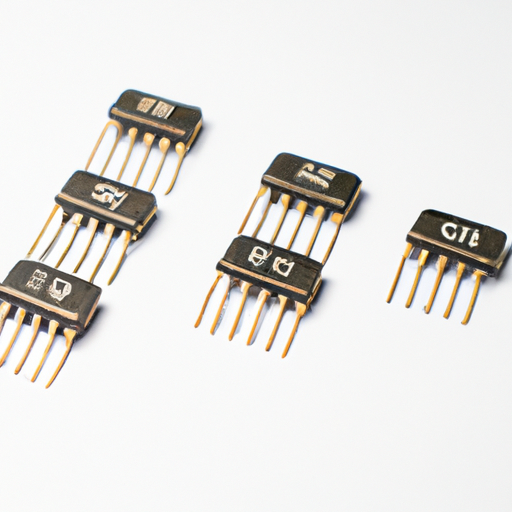
Specialized Resistors in Conjunction with MM74HC4040N: Core Technologies and ApplicationsThe MM74HC4040N, a binary ripple counter from the 74HC series, is a powerful component in digital electronics. While it is not a specialized resistor, its functionality can be significantly enhanced through the use of specialized resistors in various applications. Below, we explore core functional technologies and application development cases where specialized resistors are crucial in conjunction with the MM74HC4040N.
Core Functional Technologies1. Voltage Divider Networks2. Pull-Up and Pull-Down Resistors3. Timing and Oscillation4. Current Limiting5. Feedback Networks1. Frequency Counters2. Digital Clocks3. LED Drivers4. Frequency Division5. Signal Conditioning Application Development Cases ConclusionThe MM74HC4040N is a versatile binary counter whose effectiveness is greatly enhanced by the use of specialized resistors. These resistors play critical roles in voltage regulation, timing, current limiting, and signal conditioning, making them essential components in the design of reliable and efficient electronic circuits. By understanding the interplay between the MM74HC4040N and specialized resistors, engineers can develop innovative solutions in digital electronics, timing applications, and signal processing, ultimately leading to more robust and effective designs.
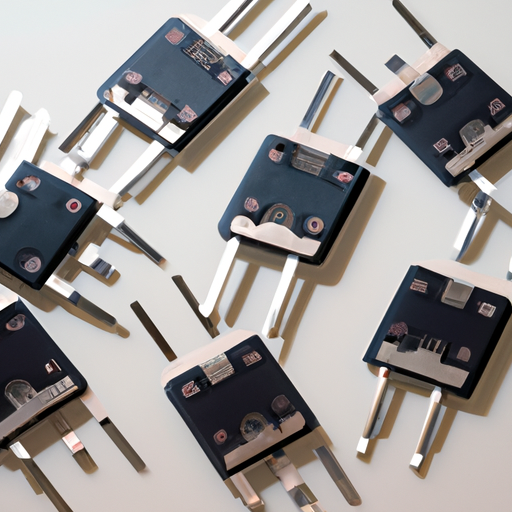
Application Development in Chassis Mount Resistors for CFR-25JB-52-1R: Key Technologies and Success StoriesChassis mount resistors, such as the CFR-25JB-52-1R, play a crucial role in a wide range of electronic applications by providing reliable resistance in circuits. The development and application of these resistors involve several key technologies and methodologies. Below is an overview of the key technologies and notable success stories related to chassis mount resistors like the CFR-25JB-52-1R.
Key Technologies1. Material Science2. Thermal Management3. Automated Manufacturing4. Simulation and Modeling5. Quality Assurance and Testing1. Consumer Electronics2. Automotive Applications3. Industrial Automation4. Telecommunications5. Medical Devices Success Stories ConclusionThe development and application of chassis mount resistors like the CFR-25JB-52-1R involve advanced technologies in materials, manufacturing, and thermal management. Their successful integration into various industries, including consumer electronics, automotive, industrial automation, telecommunications, and medical devices, underscores their versatility and importance in modern electronic systems. As technology continues to evolve, the demand for high-performance resistors is expected to grow, driving further innovations in this field. The ongoing advancements in material science, manufacturing techniques, and quality assurance will continue to enhance the capabilities and applications of chassis mount resistors, ensuring they remain a vital component in the electronics landscape.


